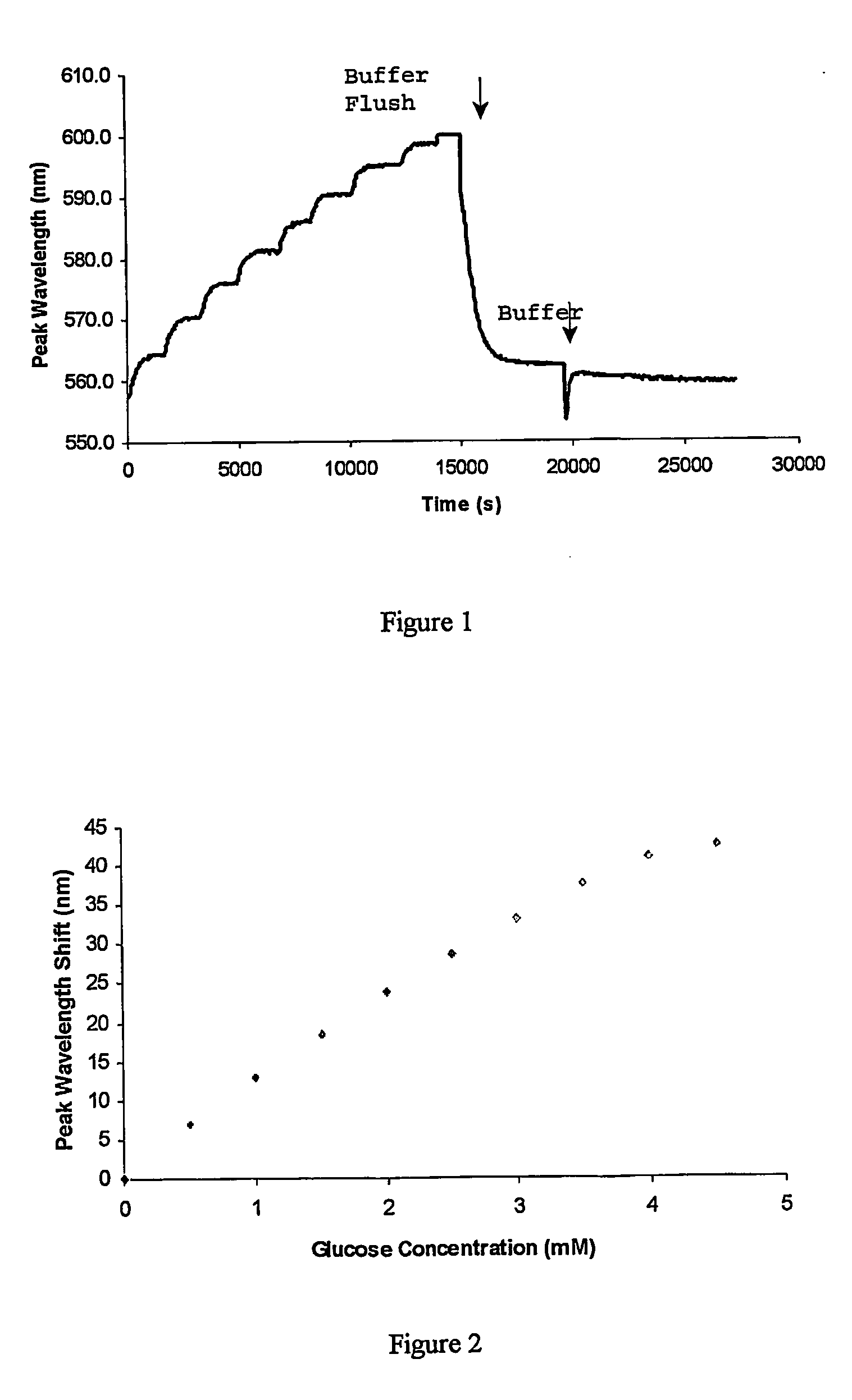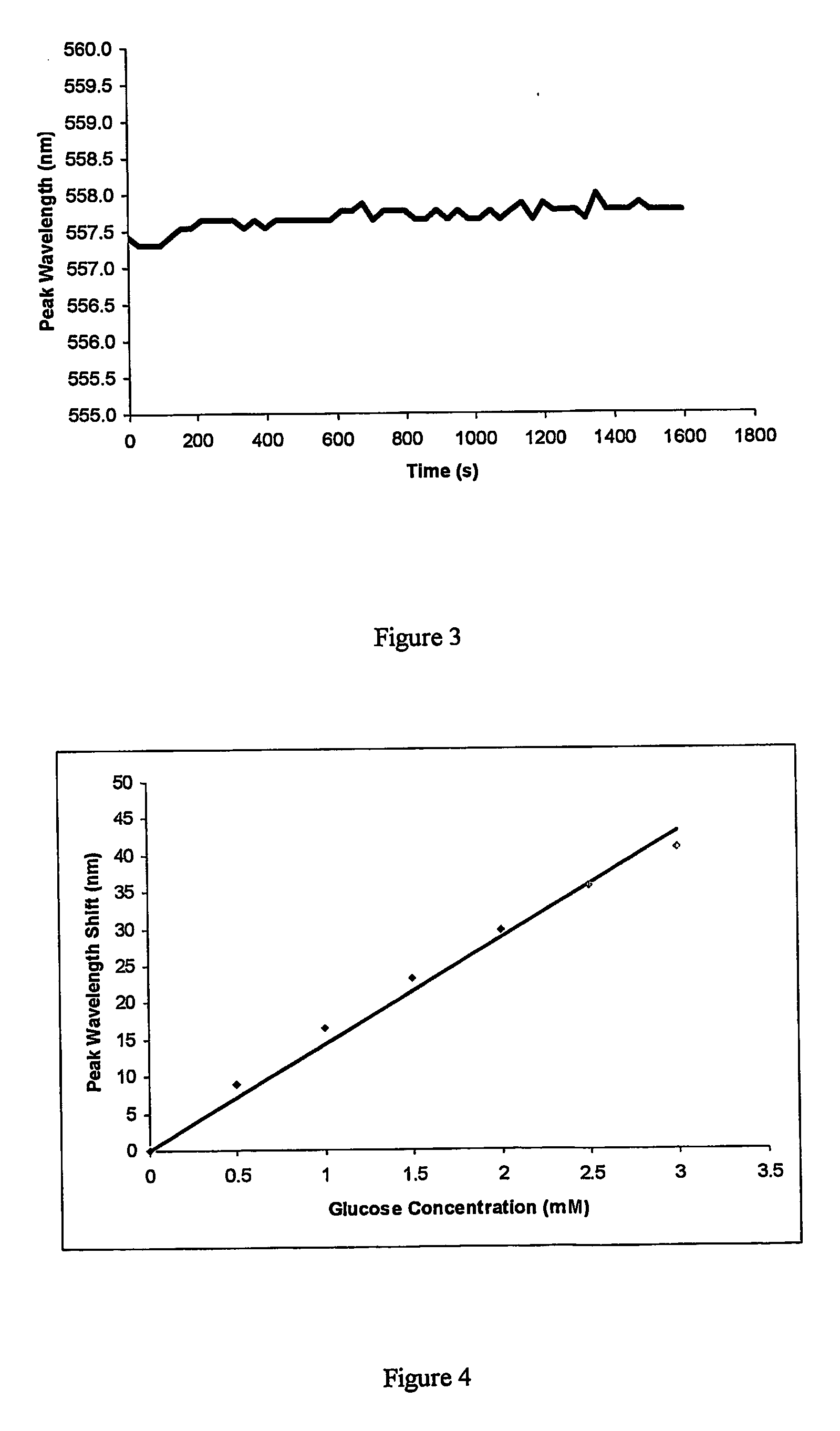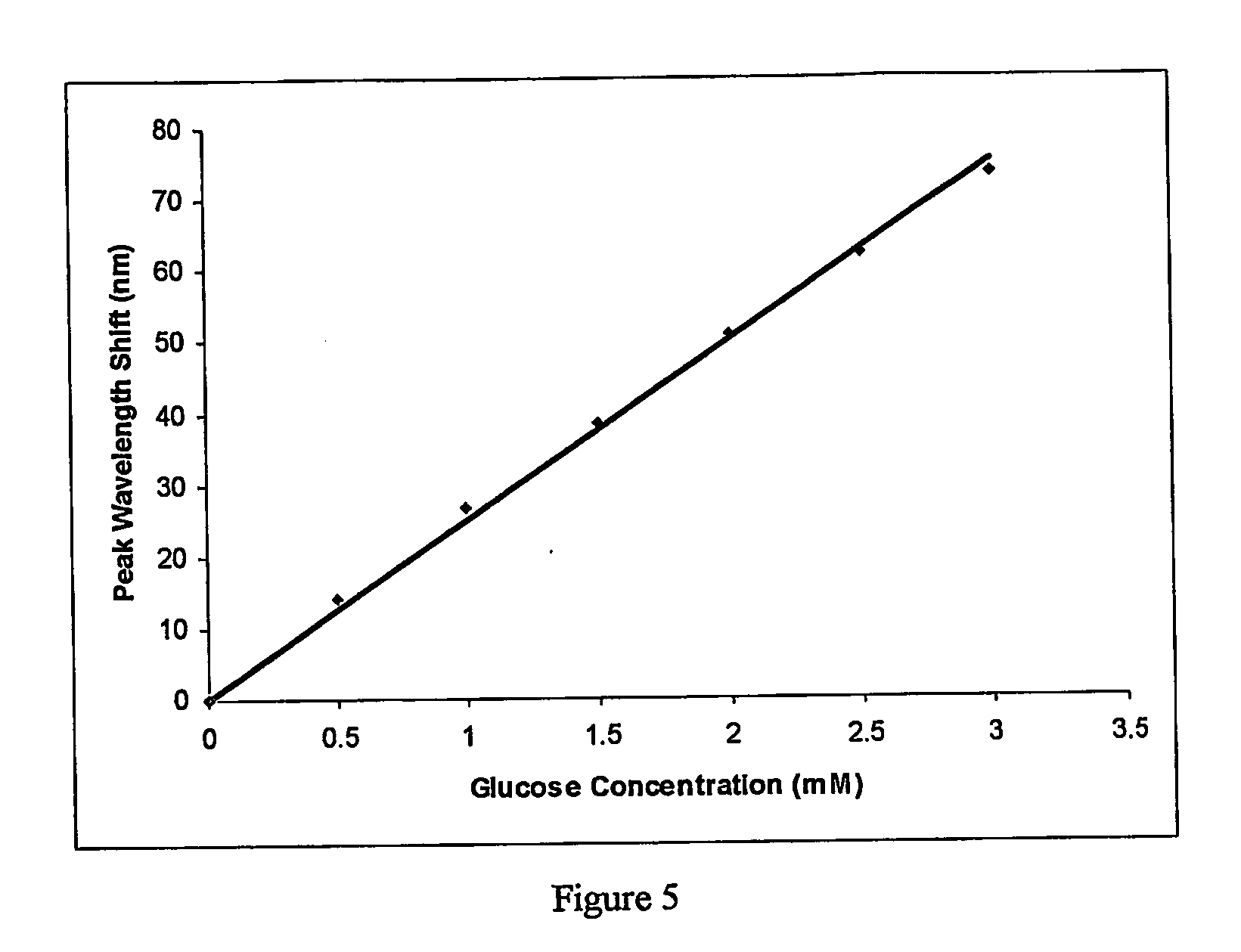Holographic sensor
a sensor and holographic technology, applied in the field of holographic sensors, can solve problems such as inability to detect, and achieve the effect of promoting the formation of rb(oh)3
- Summary
- Abstract
- Description
- Claims
- Application Information
AI Technical Summary
Benefits of technology
Problems solved by technology
Method used
Image
Examples
example 1
[0043] 3-Acrylamido-phenylboronic acid (“3-APB”) was synthesised by reacting 3-amino phenylboronic acid with an excess of acryloyl chloride in an aqueous alkaline solution. The product was extracted in acetone and dried using a rotary evaporator. The structure of 3-APB was confirmed using NMR. The purity was about 90%, TLC showing very little contamination.
[0044] 3-APB was then copolymerised with acrylamide and N,N′-methylene bisacrylamide, and a hologram recorded within the polymer material. The response to glucose was then tested by increasing the glucose concentration in phosphate-buffered saline (PBS) solution at pH 7.4 in 0.5 mM steps.
[0045]FIG. 1 shows the response of the hologram in terms of peak diffraction wavelength readings. The reaction with glucose was fully reversible after the system was flushed twice with fresh buffer. The sensor was also sensitive enough to pick up concentrations of glucose as low as 0.5 mM (9 mg %) with a shift of about 6 nm. This result was high...
example 2
[0048] 3-APB, the synthesis of which is described in Example 1, was recrystallised from an aqueous ethanolic solution with a purity of about 98%; both NMR and TLC showed that there were no contaminants present.
[0049] 3-APB was co-polymerised with acrylamide and N,N′-methylene bisacrylamide to form a polymer comprising about 15 mole % of purified 3-APB and about 1.55 mole % N,N′-methylene bisacrylamide (cross-linker). A hologram was then recorded in the polymer.
[0050] A calibration curve for response to glucose in PBS pH 7.4 at 30° C. is shown in FIG. 4. The purified 3-APB had a response of about 14 nm per millimolar glucose whereas the 90% pure 3-APB of Example 1 had a response of only 1 nm per millimolar glucose for a hologram with the same mole % of 3-APB.
[0051] A polymer comprising a 3-APB molar fraction of 25% was synthesised using the same amount of cross-linker (1.55 mole %) and the same amount of solids per unit volume of solvent. A hologram was recorded within the polymer...
example 3
[0053] 2-Acrylamido-phenylboronic acid (“2-APB”) was synthesised by reacting 2-aminophenylboronic acid with an excess of acryloyl chloride in an aqueous alkaline solution. The product was extracted in acetone and dried using a rotary evaporator. The structure of 2-APB was confirmed using NMR. The purity was shown to be greater than 90%.
[0054] 2-APB was then copolymerised with acrylamide and N,N′-methylene bisacrylamide to form a co-polymer with 20% 2-APB and 1.5% N,N′-methylene bisacrylamide (cross-linker). A hologram was then recorded within the polymeric medium. The resulting holographic sensor was then tested for its response to glycerol, ethylene glycol, lactate, tartaric acid and glucose. Testing was conducted using PBS (pH 7.4) at 30° C.
[0055] The response of the sensor to the five analytes is shown in FIG. 6. It is evident that the sensor is unresponsive to changes in glycerol, ethylene glycol and lactate concentration. The sensor is, however, sensitive to change in the lev...
PUM
| Property | Measurement | Unit |
|---|---|---|
| Optical properties | aaaaa | aaaaa |
Abstract
Description
Claims
Application Information
 Login to View More
Login to View More - R&D
- Intellectual Property
- Life Sciences
- Materials
- Tech Scout
- Unparalleled Data Quality
- Higher Quality Content
- 60% Fewer Hallucinations
Browse by: Latest US Patents, China's latest patents, Technical Efficacy Thesaurus, Application Domain, Technology Topic, Popular Technical Reports.
© 2025 PatSnap. All rights reserved.Legal|Privacy policy|Modern Slavery Act Transparency Statement|Sitemap|About US| Contact US: help@patsnap.com



